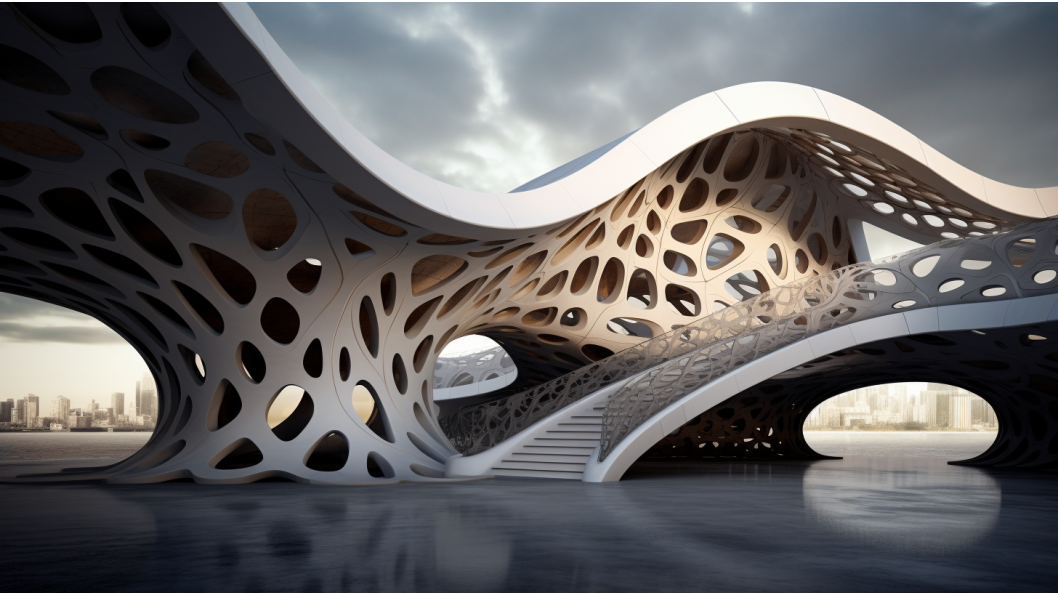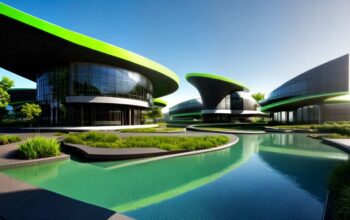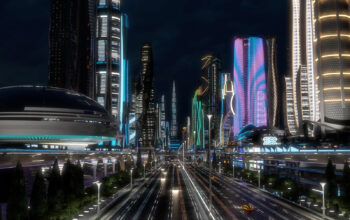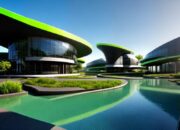In an era defined by rapid technological advancement and an insatiable demand for innovation, the fields of architecture, engineering, and product design are undergoing a profound transformation. At the heart of this revolution lies parametric design, a methodology that is reshaping how we conceive, develop, and materialize our built environment and manufactured goods. Far from being a mere trend, parametric design represents a fundamental shift in the design paradigm, moving from static drawings to dynamic, data-driven models that can respond intelligently to changing inputs.
It’s a methodology that empowers designers to explore an unprecedented range of possibilities, optimize for complex criteria, and ultimately create solutions that were once deemed impossible. This article delves deeply into the intricacies of parametric design, exploring its fundamental principles, the powerful tools that bring it to life, its diverse applications across various industries, the compelling benefits it offers, and the challenges that must be navigated as we look towards its future.
What is Parametric Design?
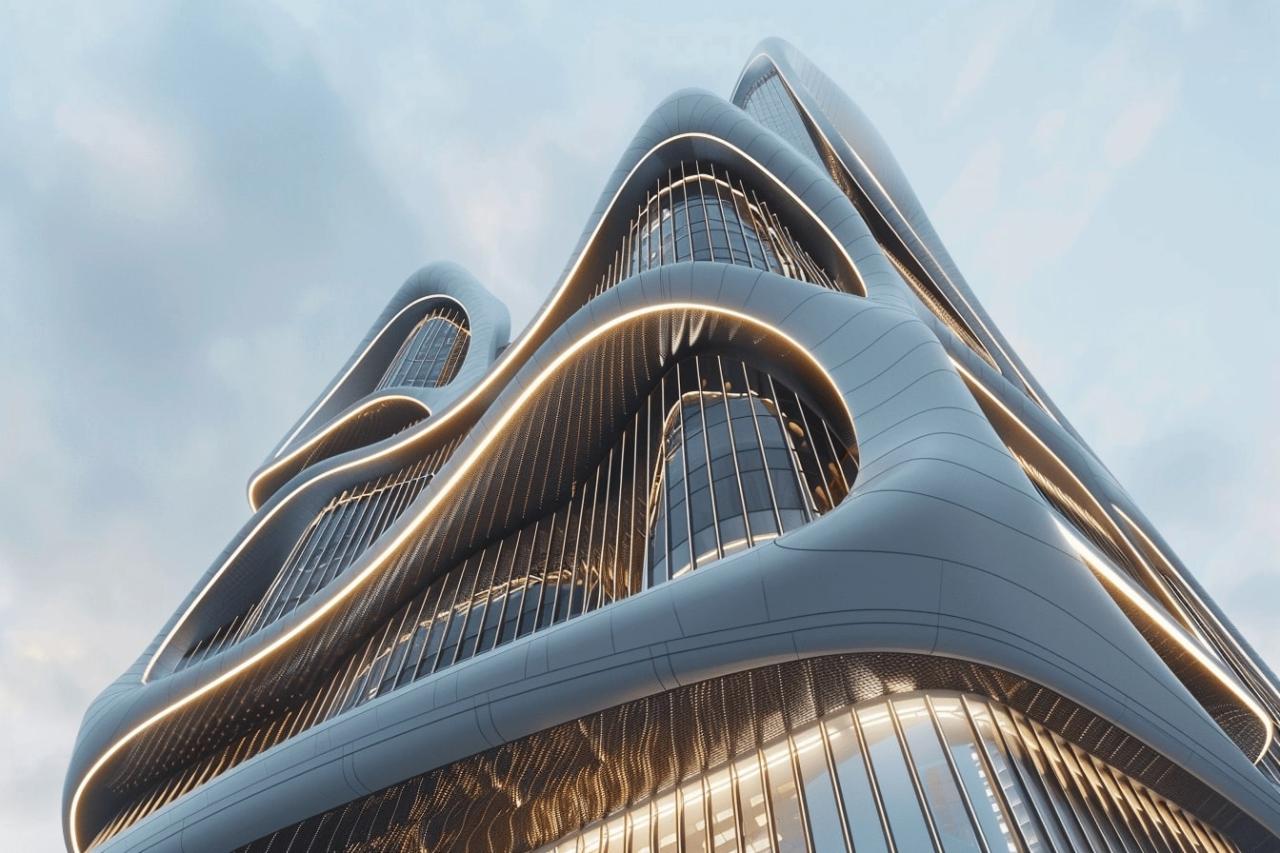
At its core, parametric design is a design methodology where relationships between design elements are used to manipulate and generate complex geometries and structures. Unlike traditional design, which often involves creating fixed drawings or static 3D models, parametric design focuses on defining parameters and rules that govern the design. When a parameter is changed, the entire design automatically updates, reflecting the new relationships and constraints. This dynamic responsiveness is what gives parametric design its incredible power and flexibility.
Imagine designing a building. In a traditional approach, if you decided to change the size of a window, you would manually redraw or adjust that window and any other elements affected by its change, such as the wall opening or shading devices. In a parametric model, you would define the window’s size as a parameter linked to the wall. If you then changed the window size parameter, the wall opening and any associated elements would automatically adjust themselves, maintaining their predefined relationships. This ability to instantly propagate changes throughout a complex model is a cornerstone of the parametric approach.
The methodology is rooted in computational design, a broader term that encompasses any design process utilizing algorithms and computational methods. Parametric design is a specific manifestation of computational design, focusing on the definition of parameters and their interdependencies. It’s about designing a system that can generate a design, rather than designing the design itself directly.
The Tools and Technologies Driving Parametric Design
The widespread adoption and advancement of parametric design would not be possible without sophisticated software and increasingly capable hardware. These tools provide the interface and computational power necessary to define complex relationships, generate geometries, and integrate various analytical functions.
Grasshopper (for Rhino)
Perhaps the most widely recognized and influential tool in the parametric design landscape, Grasshopper is a visual programming language integrated with Rhinoceros 3D modeling software. It allows users to build algorithms by connecting components visually, representing data flow and logical relationships without needing to write text-based code. Its intuitive interface and vast community support have made it a favorite among architects, designers, and artists for generating complex forms, simulating processes, and automating design tasks. Grasshopper’s open-ended nature allows for extensive customization through third-party plugins that extend its functionality for simulation, analysis, and fabrication.
Dynamo (for Revit)
Similar in concept to Grasshopper, Dynamo is a visual programming environment specifically integrated with Autodesk Revit, a leading Building Information Modeling (BIM) software. Dynamo allows users to automate repetitive tasks within Revit, generate complex geometries that are difficult to create manually in BIM, and connect Revit models to external data sources and analysis tools. Its strong integration with BIM workflows makes it invaluable for architects and engineers who need to manage large, data-rich building models and ensure design integrity across various stages of a project.
Generative Components (Bentley Systems)
An early pioneer in parametric and generative design software, Generative Components provided a robust environment for exploring design variations based on defined parameters and rules. While its interface might be less visually intuitive than Grasshopper or Dynamo, it laid much of the theoretical and practical groundwork for associative modeling and computational design, influencing many subsequent tools. It remains a powerful tool for complex architectural and engineering projects within the Bentley ecosystem.
Applications Across Industries
The transformative potential of parametric design extends far beyond theoretical concepts, demonstrating tangible impacts across a multitude of industries. Its ability to handle complexity, optimize performance, and automate processes makes it an invaluable asset.
In Architecture and Construction: This is arguably where parametric design has made its most visible and dramatic impact, revolutionizing how buildings are conceived, designed, and constructed.
- Complex Facades: Parametric design enables the creation of highly intricate and non-standard building facades that respond to environmental conditions, aesthetics, and structural logic. Examples like the Beijing National Aquatics Center (Water Cube), with its bubble-like ETFE cushions, or Zaha Hadid’s Heydar Aliyev Center, with its flowing, seamless exterior, showcase how parametric tools can realize forms that would be virtually impossible to design and document using traditional methods. These facades can be optimized for solar shading, daylighting, or unique visual effects.
- Environmental Performance: Parametric design is a powerful ally in sustainable design. Designers can embed environmental parameters into their models, optimizing building orientation, facade openings, shading devices, and ventilation strategies to improve energy efficiency, maximize natural light, and enhance occupant comfort. Simulation tools can be linked to parametric models to provide real-time feedback on performance metrics, allowing for iterative refinement towards highly sustainable outcomes.
- Urban Planning: At a larger scale, parametric approaches are being used in urban planning to create responsive master plans. This involves generating urban layouts that optimize for factors like pedestrian flow, solar access, wind comfort, and connectivity, often in response to specific site conditions or programmatic requirements. Parametric models can simulate the impact of design decisions on an entire urban fabric, enabling more informed and sustainable urban development.
In Product Design: Parametric design has empowered product designers to create highly customized, performant, and uniquely shaped products.
- Mass Customization: From footwear tailored to individual foot scans to prosthetics perfectly fitted to a patient’s anatomy, parametric design enables mass customization. Designers can create a base model and then adjust parameters based on individual user data, producing unique products efficiently without needing to redesign from scratch each time. This provides personalized solutions at scale.
- Performance Optimization: Products can be parametrically designed to optimize for specific performance criteria. This includes designing aerodynamic components for cars or aircraft, creating lightweight yet strong consumer electronics enclosures, or optimizing the ergonomics of a tool. Computational fluid dynamics (CFD) and finite element analysis (FEA) can be integrated into the parametric workflow to refine designs based on simulated performance.
- Complex Forms: Parametric tools allow for the creation of organic, biomimetic, or mathematically derived forms that would be extremely challenging or impossible to sculpt with traditional CAD tools. This opens up new aesthetic possibilities and allows designers to explore forms inspired by nature’s efficiency.
In Art and Sculpture: Artists are embracing parametric design to push the boundaries of creative expression.
- Digital Fabrication of Intricate Forms: Parametric tools allow artists to design incredibly intricate and complex sculptures that can then be fabricated with precision using 3D printing or CNC machining. This enables the creation of forms that would be too complex or time-consuming to produce by hand.
- Interactive Installations: Parametric design can be used to create interactive art installations where parameters are controlled by external sensors (e.g., audience movement, environmental data), leading to dynamic and evolving artistic experiences.
Benefits of Parametric Design

The widespread adoption of parametric design is driven by a compelling suite of benefits that address many of the limitations of traditional design methodologies.
- Enhanced Design Flexibility and Iteration: Parametric models are inherently dynamic. Designers can rapidly explore countless design variations by simply adjusting parameters, rather than redrawing. This flexibility encourages experimentation and allows for much quicker iteration cycles, leading to more refined and optimal solutions. The ability to generate multiple options quickly facilitates better decision-making with clients.
- Optimized Performance: By linking design parameters to performance metrics (e.g., energy consumption, structural stress, material usage), designers can use computational methods to optimize for specific objectives. This leads to more efficient, sustainable, and high-performing designs that meet stringent requirements while potentially reducing costs.
- Increased Accuracy and Reduced Errors: The automated nature of parametric models significantly reduces the potential for human error. Once relationships are defined, changes propagate consistently throughout the model. Furthermore, integration with BIM (Building Information Modeling) ensures that all design data is consistent and coordinated, minimizing conflicts and errors during documentation and construction.
- Automation and Efficiency: Repetitive and tedious design tasks, such as generating floor plans based on area requirements or arraying components, can be automated through parametric scripts. This frees up designers’ time to focus on higher-level creative problem-solving and strategic thinking, significantly boosting overall project efficiency and potentially reducing project timelines.
- Innovation and Creativity: By handling the complexity and automation, parametric design liberates designers to push the boundaries of what’s creatively and structurally possible. It allows for the exploration of novel forms, materials, and structural systems that would otherwise be beyond reach, fostering a culture of innovation.
The Future of Parametric Design
The trajectory of parametric design is one of continuous evolution and increasing integration with other cutting-edge technologies. Its future promises even more powerful capabilities and widespread applications.
- Integration with AI and Machine Learning: This is perhaps the most exciting frontier. Artificial intelligence (AI) and Machine Learning (ML) algorithms are beginning to augment parametric design processes. Generative Adversarial Networks (GANs) can generate novel design variations based on learned patterns, while ML can predict performance outcomes or optimize complex systems more intelligently than traditional algorithms. This will lead to truly “intelligent” design tools that can learn, adapt, and propose solutions.
- Real-time Parametric Modeling: As computational power increases and software algorithms become more efficient, the vision of real-time parametric modeling—where designers receive instantaneous visual and analytical feedback as they manipulate parameters—is becoming a reality. This will further accelerate the design-exploration process.
- Augmented Reality (AR) and Virtual Reality (VR) for Design Exploration: AR and VR technologies are poised to transform how designers interact with parametric models. Imagine walking through a parametrically generated building design in VR, or overlaying digital design iterations onto a physical site using AR. These immersive experiences will enhance understanding, communication, and decision-making throughout the design process.
Conclusion
Parametric design is not merely a software trick or a fleeting trend; it is a fundamental paradigm shift that has profoundly reshaped the landscape of design and fabrication. By shifting focus from static forms to dynamic, rule-based systems, it empowers designers with unparalleled flexibility, precision, and the capacity for optimization. From the awe-inspiring complex geometries of modern architecture to the highly optimized components in aerospace engineering and the mass customization in product design, its impact is undeniable and continues to grow.
While challenges such as the initial learning curve and computational demands persist, the benefits—including enhanced iteration, optimized performance, increased accuracy, and the ability to realize previously impossible forms—far outweigh these hurdles. As parametric design continues to integrate with advancements in artificial intelligence, real-time computing, and robotic fabrication, its transformative power will only expand, leading to a future where design is more intelligent, efficient, sustainable, and creatively boundless than ever before. It is an essential methodology for anyone looking to innovate and excel in the evolving world of design.

